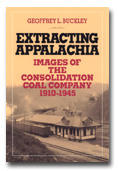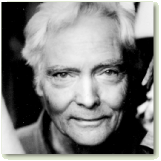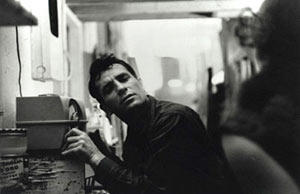
by
Gilbert Wesley Purdy.
Extracting Appalachia: Images of the Consolidation Coal Company 1910-1945 by Geoffrey L. Buckley.
Athens, Ohio: Ohio University Press, 2004. xxiv+216 pp.
$46.95 cloth. ISBN 0-8214-1555-7. $22.95 paper. ISBN 0-8214-1556-5.
In the process of working toward his doctorate, in Geography, Dr. Geoffrey L. Buckley informs us, it was his “good fortune to stumble upon a truly remarkable collection of coal-mining photographs.” The photographs — some four thousand in all — were taken for the Consolidation Coal Company, the largest of the various consolidated mining interests in the Mid-Atlantic region of the United States. That collection is the subject of
Extracting Appalachia: Images of the Consolidation Coal Company 1910-1945. Various historical studies and the Consolidation Coal Company Mutual Monthly, the company organ in which many of the photos appeared, provide the immediate context from which it is viewed.
Buckley is not unaware of the validity of the analytical/semiotic perspective. The reader is warned that photographs are not the purely objective records they may seem to be. The author defers to Mona Domosh, a colleague in his field of Historical Geography:
Visual material — photographs, advertisements, and newspaper images — are discursive forms, and need to be interpreted as documents of culture, or as “texts.” These images are not transparent conveyors of “truth,” but instead participate in the creation of meaning.
All reference to the need for a rigorous analytical machinery, however, remains in a chapter set aside for the purpose of making general observations relating to the matter. The pictures themselves are queried almost entirely from an historical perspective.
The fact that historical perspectives can be highly problematical has earlier been made clear, in the Introduction, by dint of a prophylactic statement:
My purpose here is not to write yet another history of coal mining in Appalachia. That task has been carried out ably by others. Nor is it my intention to excoriate the coal industry for its poor safety record, its abuse of individual liberties, its antiunionism, and its use of heavy handed tactics during the first three decades of the twentieth century. No doubt these are valid criticisms, even if sometimes we have carried the generalizations too far…. Rather, my purpose is to critically examine the photographs in the Consolidation Coal collection, place them in historical context, and try to understand why they were taken and for whom.
The presence of such a disclaimer suggests a wider context within which Extracting Appalachia resides, limitations under which its author necessarily labors. Any attempt at detachment will run the risk of appearing revisionist about historical matters which are resoundingly considered to be settled, and which, like all “resoundingly settled” historical matters, have for their proof a fierce emotional certainty. It is not the best environment for critical examination.
Nor does this fierce certainty exist only among the audience that Buckley imagines for his book. The above disclaimer is written for himself, as well. The detachment which he seeks — and within which he intends to examine the photographs — is every bit as much a myth as the prevailing history. There are few observations in this book that are not imbued with its author’s affinities. Those affinities are a product of the prevailing histories. His intention not to “excoriate” ends at just that. While he has sought to set aside the popular accusatory tone for a more muted one, his narrative is always mindful of his obligations.
To say that the claims of historical verity and scholarly detachment, which the reader is provided, are myths is, of course, not to suggest that they do not arrive at meaningful results. It merely describes how they arrive at their respective results. In the case of Extracting Appalachia, it also explains the limitations that Geoffrey L. Buckley has chosen — or felt compelled to choose — for his book.
Some ninety black and white photographs, chosen from the Consolidation collection, are reproduced as the subject of Dr. Buckley’s examination. The four photos in the first chapter — “Reading Historical Photographs” — are wide-angle shots intended to be representative of common themes in the collection and otherwise undergo no inspection. No photos appear in the second chapter, in which the reader is provided a brief, well turned historical overview of the mining of coal in the U. S. and the formation and rise of Consolidation Coal:
In 1927, Consolidation became the largest commercial producer of bituminous coal in the United States. In that year, the company operated ninety-two mines, employed over twelve thousand workers representing forty-three nationalities, and possessed an estimated 2.7 billion net tons of unmined mineral resources.
This ascent came by way of means that today might be considered questionable. In states such as West Virginia and Kentucky coal was king. Its representatives served as senators, congressman and governors, regularly voting the needs of their industry, it being, to their minds, synonymous with the needs of the citizens of the states they represented.
This foundation lain, the remaining four chapters are devoted to placing the photographs in socio-historical context. Coal company towns and their mines are shown in various stages of construction. In particular, the environment surrounding the miner’s life on the surface attracts Buckley’s attention. This environment necessarily includes the company magazine, the Consolidation Coal Company Mutual Monthly, from which extracts are freely quoted.
A great many observations are made upon the Mutual Monthly throughout Extracting Appalachia. The following, though more direct than most, may fairly be called “representative”:
In a very real sense, the photographs in the Consolidation Coal collection abetted the Employment Relationship Department’s efforts to achieve the company’s goals. When we gaze at rows of freshly painted company houses, merchandise at the company store, group photos of miners, and impressive gardens, we must ask ourselves why the company selected these images for publication in its magazine. We must recall that company towns were carefully planned places designed to maximize production and enhance surveillance. We must remember the company store’s reputation — deserved or not — for price gouging and debt peonage.
Nothing in the historical overview lays sufficient groundwork for these observations, and, as much as the reader may agree with many of the claims made here, the use of terms such as “abetted,” inferring that the company and its Employment Relationship Department were engaged in a quasi-criminal enterprise, is problematical. It is unclear why, in reference to these ninety photographs, we must remember the company store’s reputation “deserved or not”.
We may see these as — and they are represented as — attempts to counterbalance the company’s unquestionable intention to use the photographs to enhance its image with potential stockholders, government inspectors, its workers, the general public and itself. Hence the reader is presented with dueling mythologies: competing attempts to establish the real history of Consolidation Coal. In the words of Roland Barthes:
…what causes mythical speech to be uttered is perfectly explicit, but it is immediately frozen into something natural; it is not read as motive but as reason.1
Through the apparent transparency of the photograph, the company had sought to make its case. Its officers were subtle enough not to resort to obvious tactics. The photos are simple. Any arrangement — any posing — stayed well within recognized limits. Buckley utilizes prevailing historical perspective, lightly seasoned with observations garnered from the field of semiotic analysis, to combat one myth with another.
The company did use “selection” to an extent that may be considered indicative. Buckley’s argument to this affect is strong:
Comparing the pictures in the Consol collection with images taken by Farm Security Administration photographers, as well as those found in private collections such as the Mary Behner Christopher archive, we find sharp differences with respect to content. Unlike the Consol photographers, the FSA photographers show us the grim side of life in a coal-mining town — the unpaved streets, the poor condition of company housing, the inadequate facilities for drinking water and for waste disposal. The government photos, in particular, remind us that it was not uncommon to find children working in and around the mines. Government photographers also take us into the homes of the miners so that we can view the condition of company owned houses and gain valuable insights into the daily lives of the mining families.
Consolidation Coal clearly chose its model towns as the subjects of most of the ninety photos in
Extracting Appalachia. Within the context of the historical period represented by the photos, its photographers chose, in them, subjects calculated to impress. Those photos that do seem uncomplimentary are generally of subjects that would have seemed favorable in the early twentieth century, impressed as it was with industrial scenes, and the wealth they implied, and unimpressed as it was with the natural environment, there seeming to be inexhaustible tracts of unspoiled land.
But it is important to recognize that Consolidation is not the only source of selectivity here. Buckley himself has selected these ninety photographs out of some 4000+. He, too, necessarily has an agenda to advance. The reader is provided no description of the 3910+ remaining photos. The Farm Security Administration selected its subjects in order, as Buckley himself points out, to support President Roosevelt’s New Deal programs. Furthermore, the FSA photographs Buckley describes were taken during the depths of the Great Depression, while all but a very few of the pictures he has selected from the Consolidation collection were taken during the boom years that preceded the Depression, the company magazine having ceased publication in 1928.
Moreover, the desegregation that existed only within the mines proper, correct as our author is to point out the hypocrisy of it, was more than was generally available elsewhere below the Mason-Dixon line (and in much of the North). The mines had already long provided a greatly improved lifestyle for Eastern European laborers — whose place had been taken by African-Americans due to reduced immigration, from that region, during World War I — and a ready route to assimilation. For all the problems that have historically inhabited company towns, the better Consolidation towns had postal, telephone and electrical service, well before they were generally available to the rest of the rural United States. The laborer for Consolidation Coal was not entirely naive when he thought that life was good.
Simplifying matters to the more direct question as to whether the photos are “untruthful,” we may begin, at least, to avail ourselves of the advantage of the more objective criterion of semiotic analysis. Those provided (however paratactically) by Winfried Noth, in “Can Pictures Lie?”, are simple and compelling:
The question of truth or lie in pictures has a semantic, a syntactic, and a pragmatic aspect. From a semantic point of view, a true picture must be one which corresponds to the facts it depicts. From a syntactic point of view, it must be one which represents an object and conveys a predication about this object, and from the pragmatic point of view there must be an intention to deceive on the part of the addresser of the pictorial message. 2
The transparency of the photograph stems from its perfectly satisfying the first criteria. The photographs in question employ various predicates, satisfying the second. As for the pragmatic aspect, there would seem to be no reason to believe that the management of Consolidation had undertaken a systematic program of disinformation. It is arguable, in view of these ninety photos, that the collection may simply reflect the normal social constructs and exigencies of the times.
Geoffrey L. Buckley would presumably reply that the conditions in these towns were an exception rather than the rule, that both the model towns and photos were predicated upon the highest possible profit structure and the lowest possible wage structure. Even in photos of these models towns there are indications that problems abounded. At this point in our history, when unions are in retreat and ever larger portions of the U.S. population face low wage employment stripped of health and retirement benefits, when the concept of Affirmative Action is under attack, he might add, corporations can not be allowed to think that the convenient excuse of “the times” is available to them, that sophisticated public relations can expunge a multitude of sins. We all bear a responsibility to strive to overcome our “social constructs and exigencies” — particularly those of us who possess wealth and power.
The reader of
Extracting Appalachia will find a book that walks the line between topical non-fiction and scholarship. Accordingly, no attempt is made to analyze the photographs as photographs. None to utilize them as a means to add to our knowledge of period or place. No higher level myth is sought from which to resolve the competing mythologies that inform the book and photos.
Dr. Buckley’s advocacy for the rank and file coal miners of the early twentieth century, and, by extension, the rank and file workers of all industries and periods, is laudable. Mythologies are not, it bears repeating, necessarily untrue. His intent, by however circuitous a process, is to place ninety photographs into an existing framework and to free them to say what they have to say within it. Toward the end that they may speak freely, within that framework, he has sought to avoid stridency and overt politicization. On that basis, it seems a fair surmise that
Extracting Appalachia: Images of the Consolidated Coal Company will justly occupy an honored place within Geographical and Labor History collections.
1 Barthes, Roland.
Mythologies, trans. Annette Lavers (New York: Noonday Press, 1975) 129.
2 Noth Winfried. "Can Pictures Lie?" Semiotic Review of Books, Vol. 6, No. 2 pp 10-12. Canada: University of Toronto, 1995.
http://www.chass.utoronto.ca/epc/srb/srb/pictures.html.
Gilbert Wesley Purdy has published poetry, prose and translation in many journals, paper and electronic, including: Jacket Magazine, Poetry International (San Diego State University), The Georgia Review (University of Georgia), Grand Street, SLANT (University of Central Arkansas), Consciousness Literature and the Arts (University of Wales, Aberystwyth), Orbis (UK), Eclectica, and Valparaiso Poetry Review. Links to his work online and to a selected bibliography of his work in paper venues appear at his Hyperlinked Online Bibliography.







